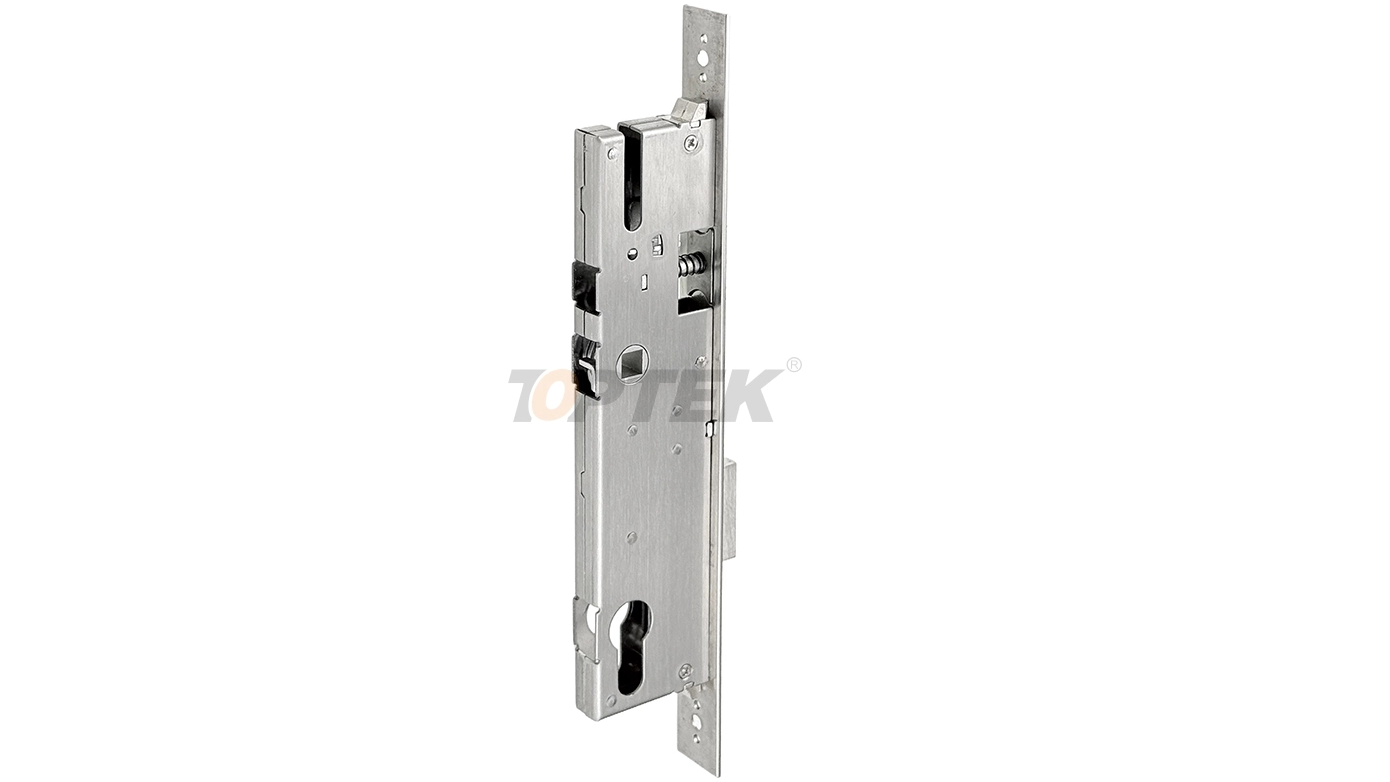Fire doors serve as critical barriers that can save lives during emergencies, but their effectiveness depends entirely on proper functionality. At the heart of every fire door system lies the fire door lock—a specialized mechanism designed to balance security with emergency egress requirements. Understanding what key operates your fire door lock isn't just a matter of convenience; it's essential for building safety, compliance, and emergency preparedness.
Whether you're a building manager, business owner, or safety professional, knowing the specifics of your fire door lock system can mean the difference between smooth daily operations and costly compliance violations. Fire door locks operate differently from standard door locks, and the keys that control them have unique characteristics that serve both security and safety purposes.
This comprehensive guide will help you identify your fire door lock type, understand the various key systems available, and ensure your building maintains proper fire safety standards while meeting security needs.
Understanding Fire Door Lock Systems
Fire door locks differ significantly from conventional door hardware. These specialized systems must comply with strict fire safety codes while providing appropriate levels of security for different building types and occupancy requirements.
The primary function of a fire door lock is to allow the door to close automatically during a fire emergency while still permitting authorized access during normal operations. This dual requirement creates unique challenges that standard locks simply cannot address.
Types of Fire Door Locks
Panic Bar Systems
Panic bars, also known as crash bars or push bars, represent the most common fire door lock solution for high-traffic areas. These horizontal bars span the width of the door and allow immediate exit by pushing against the bar. The key for panic bar systems typically operates a cylinder lock that can disable the panic function when needed for security purposes.
Electromagnetic Locks
Electromagnetic locks use electrical current to secure fire doors during normal operations. These systems require a specific override key or key card that building management uses to manually release the lock. During fire emergencies, the building's fire alarm system automatically cuts power to these locks, allowing free egress.
Mortise Lock Sets
Mortise lock sets integrate into the door's frame and offer both keyed entry and emergency egress capabilities. The key for these systems operates a standard lock cylinder while maintaining the door's fire rating. These locks often feature a thumb turn on the interior side for quick exit.
Electric Strike Systems
Electric strike systems work in conjunction with standard locksets to provide remote access control. The key component here often involves both a physical key and an electronic access method, such as a key card or keypad code.
Key Types for Fire Door Locks
The specific key required for your fire door lock depends on the manufacturer, lock type, and building security requirements. Most fire door lock keys fall into several distinct categories.
Standard Keyed Systems
Many fire door locks use conventional key systems with standard pin tumbler cylinders. These keys look similar to typical door keys but may have specific markings or stamps indicating their fire door application. Building managers typically maintain master key systems that allow access to multiple fire doors throughout the facility.
High-Security Keys
Buildings with elevated security requirements often use high-security key systems for their fire door locks. These keys feature unique cutting patterns, specialized materials, or electronic components that prevent unauthorized duplication. Brands like Medeco, Mul-T-Lock, and ASSA manufacture high-security cylinders specifically designed for fire door applications.
Electronic Keys and Cards
Modern fire door lock systems frequently incorporate electronic access control. Key cards, proximity cards, or smart keys provide access while maintaining detailed audit trails of who accessed which doors and when. These systems often include backup mechanical key override capabilities for emergency situations.
Emergency Override Keys
Fire department connections and emergency override systems require specialized keys that allow first responders immediate access during emergencies. These keys, often called FDC keys or knox box keys, provide critical access when electronic systems may be compromised.

Identifying Your Fire Door Lock Key
Determining the correct key for your fire door lock requires careful examination of both the lock hardware and any existing keys or documentation.
Physical Inspection Methods
Start by examining the lock cylinder face for manufacturer markings, model numbers, or key blank specifications. Most reputable fire door lock manufacturers stamp their cylinders with identifying information that can help determine the appropriate key type.
Look for any existing keys that may be tagged or marked with fire door designations. Building management often maintains separate key rings or key boxes specifically for fire door access, and these keys may have distinctive markings or tags.
Documentation Review
Building plans, fire safety documentation, and lock installation records often contain specific information about fire door lock types and key specifications. Contact your building's architect, fire safety consultant, or lock installation company for detailed system information.
Fire inspection reports may also reference specific lock types and key requirements, particularly if there have been compliance issues or recommendations for system upgrades.
Professional Assessment
When in doubt, consult with a qualified locksmith or fire door technician who can properly identify your system and provide appropriate keys. These professionals can also assess whether your current fire door locks meet current fire codes and security requirements.
Obtaining Fire Door Lock Keys
Acquiring the correct key for your fire door lock involves several important considerations related to security, compliance, and proper authorization.
Authorized Key Duplication
Fire door lock keys should only be duplicated by authorized locksmiths or security professionals who understand the specific requirements of fire door systems. Unauthorized key duplication can compromise both security and fire safety compliance.
Many fire door lock manufacturers maintain strict key control programs that require proper authorization before duplicating keys. These programs help prevent unauthorized access while ensuring that replacement keys meet quality standards.
Master Key Systems
Large buildings often implement master key systems that allow different levels of access throughout the facility. Fire door locks typically integrate into these systems, with grand master keys providing access to all fire doors while individual keys may only operate specific doors or zones.
Key Management Protocols
Proper key management for fire door locks involves maintaining detailed records of who has keys, regular key audits, and prompt rekeying when keys are lost or when personnel changes occur. These protocols help ensure that fire door security remains intact while meeting fire safety requirements.
Maintaining Fire Door Lock Compliance
Fire door locks must undergo regular inspection and maintenance to ensure continued compliance with fire safety codes and proper operation during emergencies.
Regular Inspection Requirements
Fire codes typically require monthly or quarterly inspection of fire door locks to verify proper operation. These inspections should include testing both the normal access function and the emergency egress capability.
Document all inspections and maintain records as required by local fire codes. Many jurisdictions require specific forms or reporting procedures for fire door system inspections.
Key System Maintenance
Fire door lock keys should be tested regularly to ensure smooth operation and proper fit. Worn or damaged keys can prevent proper lock operation and may compromise fire door effectiveness.
Replace worn keys promptly and ensure that all authorized personnel have properly functioning keys. Consider implementing key rotation schedules to prevent excessive wear on frequently used keys.
Ensuring Your Fire Door Locks Work When It Matters
Fire door locks play a crucial role in building safety, but they're only effective when properly maintained and operated with the correct keys. Understanding your specific fire door lock system and maintaining proper key control helps ensure these critical safety systems function as designed during emergencies.
Regular professional assessment of your fire door lock systems can identify potential issues before they become compliance problems or safety hazards. Work with qualified fire door technicians and locksmiths to maintain your systems according to manufacturer specifications and local fire codes.
Remember that fire door locks must balance competing requirements for security and safety. The right key system, properly maintained and managed, helps achieve this balance while protecting both people and property.
Fire Door Lock
Bathroom Door Lock
Classroom Door Lock
English
العربية
Français
Русский
Español
Português
Deutsch
italiano
日本語
한국어
Nederlands
Tiếng Việt
ไทย
Polski
Türkçe
አማርኛ
ພາສາລາວ
ភាសាខ្មែរ
Bahasa Melayu
ဗမာစာ
தமிழ்
Filipino
Bahasa Indonesia
magyar
Română
Čeština
Монгол
қазақ
Српски
हिन्दी
فارسی
Kiswahili
Slovenčina
Slovenščina
Norsk
Svenska
українська
Ελληνικά
Suomi
Հայերեն
עברית
Latine
Dansk
اردو
Shqip
বাংলা
Hrvatski
Afrikaans
Gaeilge
Eesti keel
Māori
සිංහල
नेपाली
Oʻzbekcha
latviešu
অসমীয়া
Aymara
Azərbaycan dili
Bamanankan
Euskara
Беларуская мова
भोजपुरी
Bosanski
Български
Català
Cebuano
Corsu
ދިވެހި
डोग्रिड ने दी
Esperanto
Eʋegbe
Frysk
Galego
ქართული
guarani
ગુજરાતી
Kreyòl ayisyen
Hausa
ʻŌlelo Hawaiʻi
Hmoob
íslenska
Igbo
Ilocano
Basa Jawa
ಕನ್ನಡ
Kinyarwanda
गोंगेन हें नांव
Krio we dɛn kɔl Krio
Kurdî
Kurdî
Кыргызча
Lingala
Lietuvių
Oluganda
Lëtzebuergesch
Македонски
मैथिली
Malagasy
മലയാളം
Malti
मराठी
ꯃꯦꯇꯥꯏ (ꯃꯅꯤꯄꯨꯔꯤ) ꯴.
Mizo tawng
Chichewa
ଓଡ଼ିଆ
Afaan Oromoo
پښتو
ਪੰਜਾਬੀ
Runasimi
Gagana Samoa
संस्कृत
Gaelo Albannach
Sepeti
Sesotho
chiShona
سنڌي
Soomaali
Basa Sunda
Wikang Tagalog
Тоҷикӣ
Татарча
తెలుగు
ትግንያውያን
Xitsonga
Türkmençe
संस्कृत
ئۇيغۇرچە
Cymraeg
isiXhosa
ייִדיש
Yorùbá
isiZulu





































